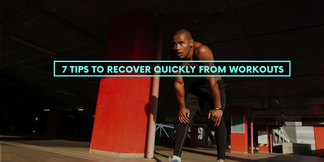If everything else falls apart, you still hydrate, fuel, and sleep. A good post-run stretch is like checking in with each part of your body. That’s when your muscles are soft, warm, and ready to be coaxed, not forced. Focus on carbs and protein first, then bring in those healthy fats (like avocado, nuts, olive oil) with your main meal.
{ |}
|}
When it comes to working out, proper muscle recovery is just as important to your success as the exercises you do. Yeah, NSAIDs (like ibuprofen, naproxen, aspirin) reduce inflammation and pain — but they come with a hidden price tag. See, inflammation after a workout is actually part of how your muscles adapt and grow stronger. Kill that too aggressively with pills, and you might be slowing your gains without even knowing it.

Spanish Squats For Healthier Knees Why How Best Practices

The main drawback to compression gear is that it’s only helpful in the area where it’s worn. If you’re doing full-body workouts and have sore muscles all over, compression socks or sleeves alone aren’t enough for your overall muscle recovery. Following an intense workout with active recovery will increase the blood flow to those muscles, helping eliminate toxins. If you can hold a steady conversation while doing the activity, it’s probably the right intensity to be considered active recovery. There’s not necessarily a recommended length of time for these active recovery sessions, so it might be best to follow general exercise guidelines, which recommend at least 30 minutes of physical activity daily. Typical active recovery activities include walking, swimming, cycling, jogging, yoga, or active stretching (Ortiz et al. 2018).
The essential amino is effectively utilized for muscle repair and growth when taken immediately pre- or post-workout. Rather than remaining completely inactive for several days after an intense training session, consider engaging in gentle activities that can help promote active recovery. But there are limits to how much stress the body can tolerate before it breaks down and suffers injury.
Shop Nike Sports Bras
Another way to unwind and speed up recovery is to chill out in a massage chair. Recovery after exercise is essential to muscle and tissue repair and strength building. This is even more critical after a heavy weight training session. The key to active recovery is finding an activity that’s low-intensity and keeps your heart rate at 30-60% of your maximum heart rate.
Some athletes swear by ice baths, ice massage, or contrast water therapy (alternating hot and cold showers) to recover faster, reduce muscle soreness, and prevent injury. The theory behind this method is that by repeatedly constricting and dilating blood vessels helps remove (or flush out) waste products in the tissues. You might consider investing in a cold plunge tub if this becomes part of your regular recovery routine. Yes, you can work out seven days a week if you vary intensity, target different muscle groups, or include active recovery. Alternating heavy, moderate, and light sessions helps prevent overtraining.
But they might not be great for your muscle development over time. While you sleep, amazing things are taking place in your body. Optimal sleep is essential for anyone who exercises regularly. During sleep, your body produces Growth Hormone (GH) which is largely responsible for tissue growth and repair.
- {
- Like everything worth working toward in life, success won’t come in a pill form (or even overnight).
- On your rest days, do light exercise such as walking or cycling at a slower pace.
- Tart cherry juice is loaded with antioxidants and anti-inflammatory compounds.
- “People who stretch during cool-down tend to have fewer complaints of muscle soreness and fewer injuries,” says McMahan.
- There’s a big misconception among amateur athletes that working out while in a fasted state has a dramatic catabolic effect.
- With guidance from running pros, these strategies slot seamlessly into your routine.
|}
{
|}
{
|}
The higher the intensity, the longer the recovery time needed. Proper nutrition and sleep further support your recovery and help your body adapt to ongoing stress, increasing your ability to skip rest days if you wish. When we engage in physical activity, especially high-intensity workouts, our muscles experience stress and microscopic tears. This process stimulates the body’s repair mechanisms, leading to muscle growth and improved strength over time. However, it also results in soreness, typically peaking 24 to 72 hours post-exercise. Understanding this process is the first step in developing an effective recovery strategy.
Let’s unravel the science of muscle recovery and why it’s crucial for your fitness journey. Your post-lift protein shake does more than just refuel your muscles. A 2017 study found that protein aided in the recovery of muscle function in the 24 hours following a workout filled with eccentric contractions (which generally happen in most strength-based workouts). And adding antioxidants to that meal improved the recovery from those workouts even more. So aim to load up on protein (think chicken or fish) and antioxidant-rich foods (think pomegranates and kale) in the hours after a tough workout, and watch your recovery times drop. Muscle recovery time can vary based on several factors, including workout intensity, fitness level, and individual physiology.
You’re fatiguing, or tiring out, various muscles when you work out, which means you’re causing microscopic damage to muscle cells. Hormone and enzyme levels fluctuate, and inflammation actually increases, explains Chris Kolba, PhD, a physical therapist at the Ohio State University Wexner Medical Center in Columbus. Active recovery boosts circulation and helps flush out metabolic waste from your muscles. Effective recovery isn’t just about feeling less soreness or muscle pain. It’s about helping your body adapt, grow and perform at its best, says Chandler.
Customer Support
{ |}
|}
But there are a couple of things to consider, including the timing and the type of carbs. Animal protein provides the most complete amino acid profile and the highest bioavailability. While you can certainly grow muscles on plant-based sources of protein, animals are the far better and more efficient source. That’s one of the reasons why protein shakes and protein powders are so popular among fitness enthusiasts. However, your primary source of protein should be real food — ideally from pastured or wild-caught animals, such as cows, pork, poultry or fish.
{
Recovery
|}
Sitting around doing nothing might seem like a good way to speed up recovery, but being sedentary is more likely to lead to post-exercise muscle soreness and stiffness. Top sportspeople use contrast showers and baths to speed up recovery after training, and you can do it too. Contrast showers involve alternating between very cold and very hot water. The cold water causes vasoconstriction, where the blood vessels contract and narrow. The hot water causes vasodilation, where the blood vessels open up again (3).
Inflammation may not be a factor in DOMS in particular, but it does contribute to some muscle soreness—and getting serious rest can help alleviate that. That’s why it is critical to pay attention to both https://www.theyeshivaworld.com/news/general/2371649/mad-muscles-review-subscription-insights-and-benefits.html how you feel and how your body is responding to your workouts. During intense physical activity, your muscles experience microscopic tears.
«Electrolyte tablets, sports drinks or coconut water can help restore this balance», Silva says. Consuming enough electrolyte-rich fluids can also help you get ahead of sore muscles. «Hydrating not only supports transportation of nutrients to the muscles in the body, but it also helps prevent delayed-onset muscle soreness», Silva says. When it comes to achieving your athletic goals, a consistent training plan isn’t enough. Including recovery strategies in your programme is essential to improving your performance—and supporting your overall health. «Recovery is essential for runners at all levels because it allows the body to repair, adapt and grow stronger after the physical stress running puts on the body», Silva says.